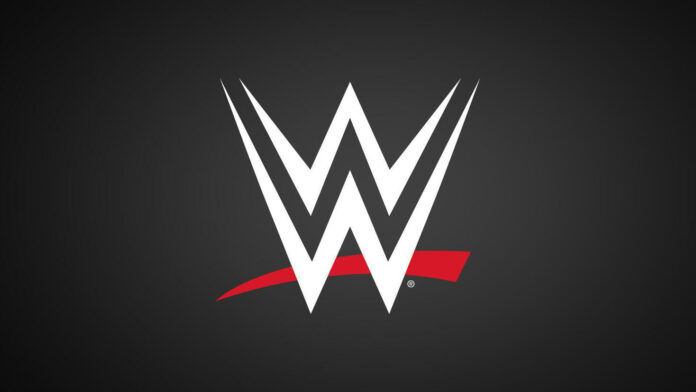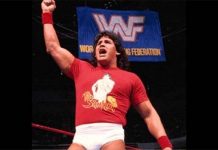
The episode of Raw this week packed a lot of punch into a three-hour broadcast that usually has at least some tedious points on a regular basis. Perhaps, that’s unavoidable with a three-hour show. Don’t get me wrong, I understand that the office is willing to sacrifice the quality of the content for the quantity since that satisfies the hefty rights fees that go along with the company’s massive TV deals. The argument could be made that with that amount of cash on the line, the tedious segments are worth it for the publicly-traded organization. Still, between the build for Money in The Bank next weekend and the next piece of the puzzle for the Wyatt storyline, there was enough meat on the bone to give the audience a reason to stay tuned into the show on the same night that the Stanley Cup finals went to game 7.
It goes without saying that the exit of Kevin Dunn, the longtime Vince McMahon director, and his nauseating amount of camera cuts and shakes, the show has a refreshed look with the camera work now. Even without some of the beaver dam type of camera shakes that were a Dunn trademark, it was well beyond the time that the show should get a revised look to have a more modern presentation. The usual pro wrestling troupes of how the shows were shot for television became cliche.
Overall, the new ownership, and more importantly, the new direction under Triple H, is a positive for the organization. However, will this lead to too much of a good thing?
I try to avoid phrasing the current dynamic of the WWE this way because it will be read too negatively when it doesn’t intend to imply such negativity. Make no mistake about it, the WWE is doing tremendous business right now, they are selling tickets to pay-per-views and TV tapings to either sell out or near a sell out levels with much higher ticket prices than in years prior. They are on the cusp of a Netflix deal that could completely change the consumption of wrestling media and thus change the dynamic of the presentation of the industry. There’s absolutely no doubt that the WWE is serving its audience very well and the results have reflected that.
But, there’s a major difference between serving the current fan base in a way that maximizes profit and the sports entertainment business as a part of pop culture the way it was in a previous generation.
That’s why I think it’s completely misguided when fans or pundits of the industry claim that pro wrestling is in some type of boom period again, as the numbers just don’t tell that story. For example, Raw this week generated 1.8 million viewers, which is around the 10-week average for the show, according to PW Torch. For a comparison, WCW Thunder in 2000, a time period when the show was more or less deemed unwatchable, the show regularly garnered around 2.5 million viewers.
Yes, I understand that it’s a different era and that the evolution of the distribution of media has completely changed the dynamics of programming, as viewers are flooded with more options than any other time in history, but the bottom line is, less people are watching pro wrestling on a consistent basis than many of the previous eras of the sport. Granted, I don’t think it’s realistically possible for sports entertainment to reach the heights that it did in the late-90s. The circumstances of the industry are different, society is different, and as mentioned, there are just too many options for viewers to expect that ten million people will tune into the show on a given week. Plus, the classic supply and demand aspect played a role as well. Those 10 million regular viewers of pro wrestling on a weekly basis were among two companies, and the competition for those viewers was a major reason for the success of the industry. Again, especially after the TKO merger, it’s very doubtful that there will realistically be that type of competition for the WWE again.
Where this all goes to the point of if the current success of the WWE is too much of a good thing is the recent plans that were announced for the expansion of the “Premium Live Events,” particularly with the deal that was touted on Raw that will bring The Royal Rumble, Wrestlemania, and Summer Slam to Lucas Oil Stadium in Indianapolis.
According to The Wrestling Observer’s Dave Meltzer, the multi-year deal will bring The Rumble to Lucas Oil Stadium in February of next year, and as we know, Summer Slam will be expanded to two nights in 2026 when the company takes the event to Minneapolis, Minnesota. Meltzer noted that after the expansion of Summer Slam to two nights in 2026, that will be the plan for the next going forward, including when the show is held in Indianapolis in the future. Of course, Wrestlemania already expanded to two nights so the precedent is set that the marquee WWE events can be two shows.
Similar to Minneapolis in 2026, Indianapolis paid WWE a hefty site for the company to bring their signature shows to the city. This is where the deals like this have a lot more to do with economic impact than anything that will be promoted in the ring. The reasons for cities to offer a site fee for these signature pay-per-views, which bring with them the cache of the historical value of the events, are numerous. The TKO corporation knows that by adding a second night to the events, it’s added value for the cities that are paying the sire fees. Furthermore, it has a domino effect that’s a win-win for everyone involved. When a second night is added, that’s another night that hotel rooms throughout the city are booked, another day of restaurants getting an increase in business, and of course, the added revenue of the parking, as well as concessions at the stadium. It goes without saying that it doubles the gate for the WWE, but again, something as trivial as hotel rooms and parking fees that are also doubled translate to a lot of tax money for the host city. By nature, when a pay-per-view is a two-day event, the target audience for live attendance goes beyond just the local fan base. In the modern era, the major PPVs will get fans to buy tickets from surrounding states, but when a show is a two-night event, often with television tapings that week held in the same city, it becomes a travel destination. Therefore, the WWE production brings in fans from outside of the region to spend more money than is usually generated from local events by the usual fan base. If the live attendance is mostly local, there isn’t the demand for hotel rooms. When an event is designed to be a travel destination for fans, there are plane tickets, hotel accommodations, and other expenses that aren’t a part of local events.
For the publicly-traded TKO corporation, this is exactly what they want, guaranteed revenue from a multi-year deal, which will provide stability for the stock price.
The other side of the coin to all of this is that perhaps the conglomerate is betting on the current fan interest too much to continue in the future. Unquestionably, there are peaks and valleys within sports entertainment. It’s simply not possible to always maintain sellout business because there are always going to be storylines that have to conclude as the product evolves over the course of a specific time frame. Right now, with the coronation of Cody Rhodes, the return of CM Punk, and the talent on the roster, there’s enough depth for two-night events, but is there really a demand for it? The causal fan is only going to watch so much content, and more importantly only spend so much cash on sports entertainment at any given time. Wrestlemania as a two-night show might be the exception, but are the other major pay-per-views really going to be able to justify two shows, especially after the current peak of WWE business?
If management oversaturates the amount of pay-per-view shows on the WWE calendar then it dilutes the importance of each individual event. I understand that double the amount of tickets sold and double the gate revenue are very good for the press releases, but what if those high-priced tickets don’t sell as well in two or three years? Again, the casual fan is only going to spend a certain amount of money on pro wrestling. Are the fans on Indianapolis really going to spend major cash on WWE events several times in the span of a few years? More specifically, are the fans that travel to the marquee shows going to want to travel to the same city multiple times during the time frame of the WWE deal?
I’m not saying it can’t or won’t happen, but rather to point out that I’m skeptical that the company can maintain its current drawing power over the course of the next few years. There are a lot of variables within pro wrestling, and a lot of outside factors that can affect the status of the industry so there’s no guarantee that the expansion will be successful.
What do you think? Share your thoughts, opinions, feedback, and anything else that was raised on Twitter @PWMania and Facebook.com/PWMania.
Until next week
-Jim LaMotta
E mail [email protected] | You can follow me on Instagram, Facebook, & Threads @jimlamotta89







